| Your browser is not supported. | ||
|
Please browse our site using any of the following options:
| ||
Queensland's Top Three Bass Impoundments

Matthew Taylor provides the 'good oil' on a trio of brilliant bass fisheries in the Sunshine State.
With over 4000 species to be found in Australian waters, it's fair to say we're blessed with a rich diversity of sportfish in our waterways. Of those species, Australian bass are widely regarded as one of our country's most popular freshwater sportfish.
While bass are naturally highly migratory and require estuarine waters to breed, thanks to the hard work of fish stocking groups, much of Australia's premier bass fishing occurs within man-made lakes and dams.
Queensland is certainly privileged with many of these stocked impoundments, each unique in its own right. The different terrains and food sources of every lake cause the fish to respond differently to our artificial lure offerings - some fisheries boast quantity of bass while others reward with quality.
Over several years I've been fortunate to both fish and witness anglers' struggles and triumphs at many of Queensland's bass fisheries. I've taken on the difficult task of compiling a list of what are arguably Queensland's top three bass impoundments, discussing the best tips on how to catch fish at each.
Lake Borumba
One of South-East Queensland's hidden beauties, Lake Borumba lies in the Sunshine Coast hinterland. Supported by the Stocked Impoundment Permit Scheme (a legally required permit for all anglers over the age of 18 when fishing in SIPS impoundments), this serene fishery has been stocked with 581,340 Australian bass and plentiful numbers of other fish species by the Lake Borumba Fish Stocking Association.
Just under 15km from the small town of Imbil, Borumba's beautiful scenery makes it a lovely place to both fish and relax.
Bass in Borumba Dam are renowned for their exceptional fighting abilities and summer is a brilliant time to experience it for yourself. Typically, the onset of the warmer months coincides with the fish spreading far and wide throughout the lake.
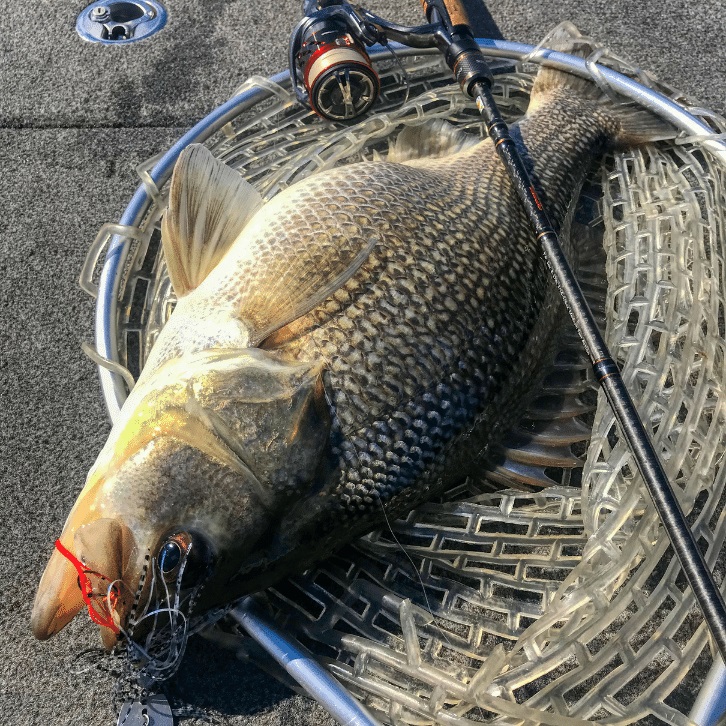
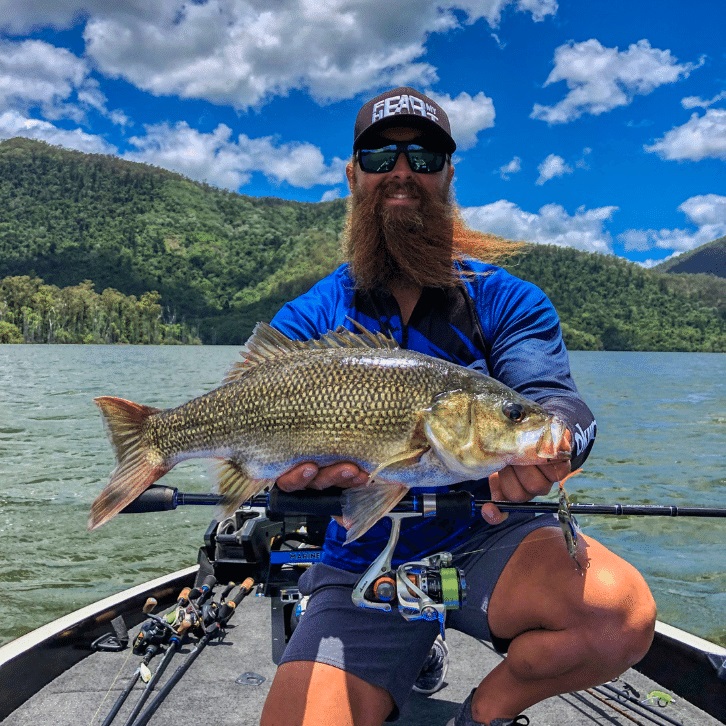
Targeting bass living in Borumba's prolific standing timber is a very popular and successful technique. An approach of continually casting lures toward different pieces of standing timber tends to see great numbers of fish caught, with lures including chatterbaits, spinnerbaits, lipless crankbaits and soft plastics each being great options to try.
I recommend trying to keep your boat positioned in 15-30ft of water - the depths at which bass commonly live and feed during the scorching summer heat. Using the same lures, another tactic that can be equally or sometimes even more successful is to target schooling fish.
Use the contour mapping tool on your sounder to search for groups of fish on the creek bed edge or underwater humps. Just remember, the adage 'don't leave fish to find fish' is not always the most appropriate approach to use. Sometimes, if the fish aren't biting, finding a new and more actively feeding school may be the secret to experiencing a memorable day. As I always say, don't be afraid to mix up your approach until you find a successful technique.
During the months of May to early July, casting lures such as lipless crankbaits and jerkbaits near Borumba's edges can be a very useful technique early in the morning. I always emphasise the efficacy of targeting edges located close to the old river bed edge. Bass use the creek bed over the course of the winter months to migrate downstream trying to complete their spawn, blocked only by man-made barriers such as weirs and dam walls.
Later in the day, targeting schooling fish tends to be the most effective approach. Spoons are often the first choice of many anglers to tempt these schooling fish. Alternatively, soft plastics or ice jigs are worth a try. Through the latter months of winter and early spring, focussing efforts entirely on schooling bass will commonly bring best results. 'Spot-hopping' between schools using spoons, soft plastics and chatterbaits will give you best chances at catching some quality Aussie bass.
Lake Maroon
Another of Queensland's most scenic waterways, Lake Maroon is situated in the heart of the Scenic Rim region.
Maroon is undoubtedly one of the most majestic lakes I've been fortunate to fish, featuring crystal clear waters surrounded by dense forestry, along with an abundance of lilies, weed beds and standing timber that form an angling paradise. This tranquil fishery boasts populations of both Australian bass and many other fish species, thanks to the stocking efforts of the Maroon-Moogerah Fish Management Association.
As for all fisheries mentioned in this article, a SIPS permit is required to both fish and support the ongoing stocking of the dam. To date, a total of 447,912 bass have been released into this premier fishery. Situated just over 20 kilometres west of Rathdowney and approximately one and a half hour's drive from Brisbane or the Gold Coast, Lake Maroon is a fruitful angling destination year-round.
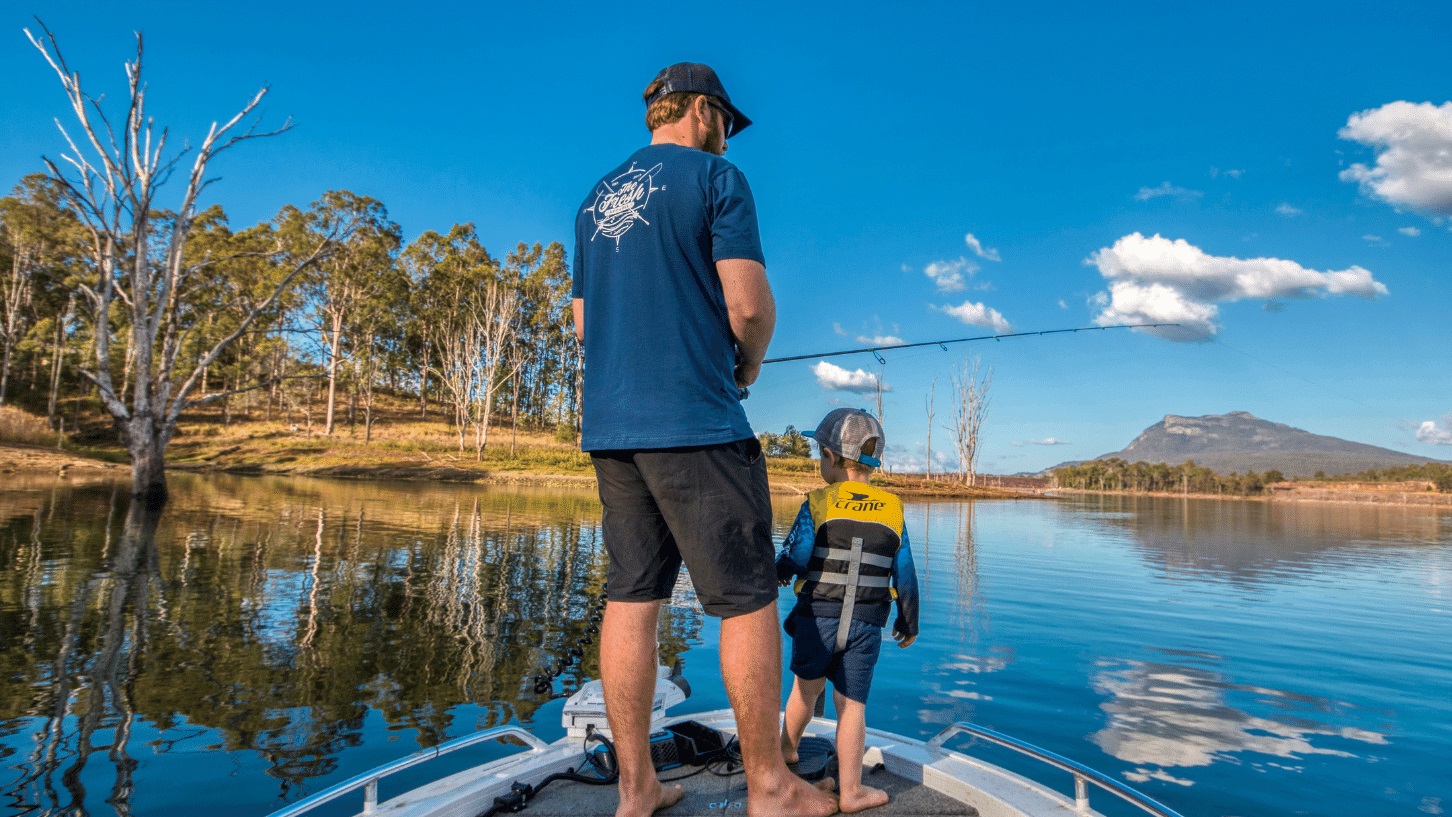
Summer is certainly one of the most exciting times of year to target Aussie bass at Maroon. As is typical for impoundments with an absence of schooling baitfish such as bony bream and barred grunter, most of Maroon's baitfish live and hide near the edges of the dam in the abundance of structure present. For that reason, angling efforts should most often be focussed on casting lures toward the edges.
Early morning and late afternoon during the warmer months are primes time to use surface lures at Lake Maroon, renowned as one of Queensland's best fisheries to catch bass on top-water. Casting surface lures over weed beds, near lilies or other structure will give you a great chance of catching a few aggressive fish. 'Walk-the-dog' style lures are ideal.
Calm conditions are undoubtedly the best for top-water fishing, though don't be fooled into thinking bass can't be caught using a surface approach when the water begins to ripple.
Likewise, increasing levels of sunlight don't necessarily coincide with the end of a top-water bite period. While both situations usually push the fish deeper, I recommend using lures like poppers, which create more commotion than traditional 'walk-the-dog' surface lures - it's often the secret to tempting the fish from deeper water and elongating the top-water bite. Just remember, never strike when a fish hits your top-water lure!
As both the sun and mercury rise, bass tend to retreat to the depths, causing top-water fishing to become less effective. I recommend an approach of fishing further from the bank and using deeper diving lures. When fishing weed-beds, I tend to begin by probing casts toward the shallower water near the edge and gradually focus my efforts closer to the edge of the weed as the day progresses.
Light soft plastics hopped over the top of weed towers can be very effective. Try using 1/8 or 1/16oz jig heads rigged with two or three-inch soft plastics. An alternative option is to swim light spinnerbaits and chatterbaits over the weed or cast swim jigs near lilies and weed.
An interesting change occurs during the late autumn and early winter period. The fish begin a period of rapid feeding as they begin to produce roe (fish eggs). Each technique I've explained as useful during the warmer months still work effectively over this time.
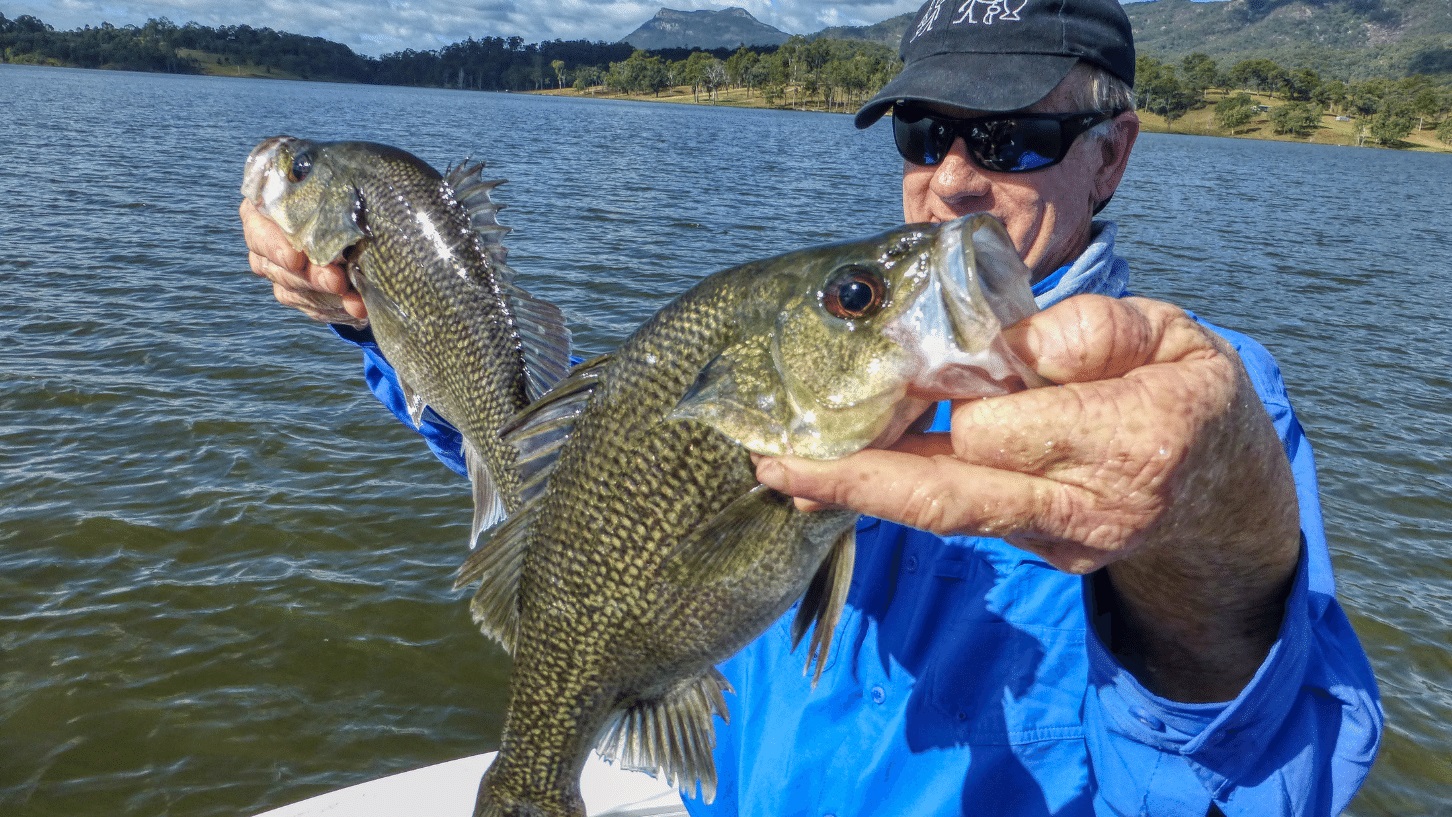
One major change that occurs is the fish begin to congregate on the outer edge of the lake's weed beds. These fish are often the fattest fish you might ever catch out of Maroon. Over the years I've had great success in catching these sometimes hard-to-tempt fish by vertically jigging ice jigs.
At times I've found less than a handful of bass on the fish finder, caught those I saw on the sounder, only to see it light up with fish as dozens more come from the weed to 'investigate' the commotion. I've had some very memorable sessions using this approach with countless fish caught, so it's certainly a technique worth remembering.
Offering great angling year-round, late winter and spring is a wonderful time to fish at Lake Maroon. While quality bass can be caught casting to the lake's edges at any time of year, this period provides an opportunity to catch big numbers of fish from the large schools present. Early morning and late afternoon are the best times to target these schooling fish, with many anglers having been rewarded with cricket scores of fish for utilising these bite times.
Lures such as soft vibes and soft plastics that imitate Maroon's small baitfish are effective at fooling the unsuspecting bass. I like to continuously 'spot-hop' between schools during the day, casting the same lures in an effort to find patches of fish willing to feed. As an alternative, casting or long lining chatterbaits and spinnerbaits can bring great success.
Ultimately, it's a case of trying different approaches on any given day to discover on what and where the fish are most actively feeding.
There's no doubt Lake Maroon is a fishery that should be on the bucket list of any keen bass angler. While the size of fish doesn't quite compare to that in the other lakes mentioned in this piece, the sheer abundance of lures and techniques the fish eat, not to mention the incredible scenery, make it an enjoyable angling destination.
Lake Somerset
Lake Somerset is undoubtedly my favourite bass fishing location. I've been fortunate to spend a great amount of time fishing and learning how best to target the bass at this hotspot. Only an 80-minute drive north-west from the Brisbane CBD, many anglers travel both nationally and internationally every year to fish at Lake Somerset.
Somerset is renowned as one of the best fisheries to catch big bass, not only in Queensland, but Australia as a whole. The abundant populations of baitfish such as barred grunter, spangled perch and bony bream make it no surprise the bass thrive and grow to such unbelievable sizes. The current world record Australian bass was caught from Somerset Dam in 2018, highlighting it as one of the best big bass fisheries in Australia.
Fishing at this lake becomes quite predictable after spending a considerable amount of time on the water. The fish typically react well to the same techniques and lures at similar times every year. The long, hot months during the summer period, particularly from November to April, are certainly one of the most testing times to consistently catch bass at this location. Large schools of bass become less frequent, with the fish spreading throughout the dam.
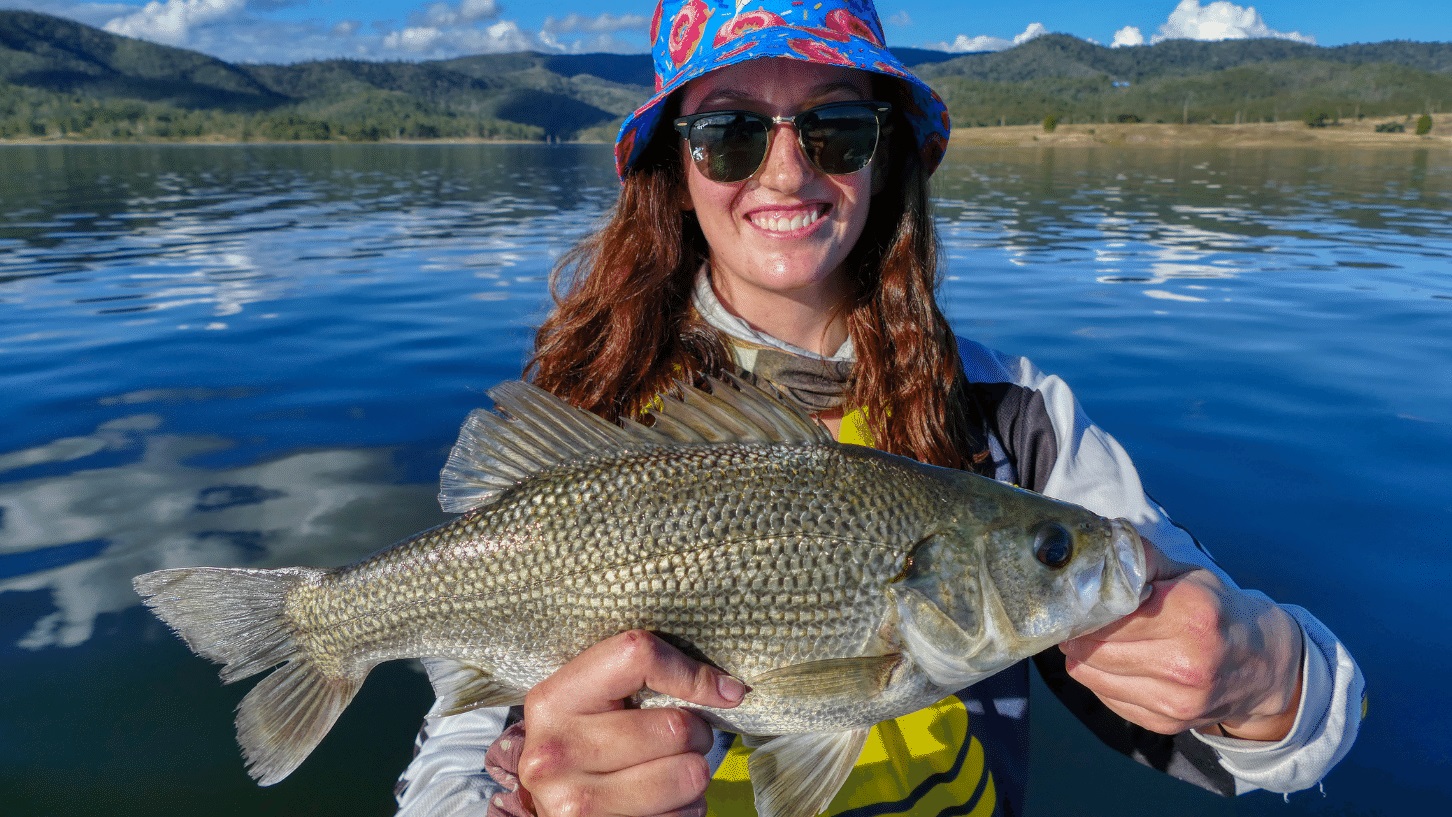
In this situation, trolling is one of the best techniques to catch both quality and quantity of fish. Most fish will be located in approximately 20-35ft. Using your depth sounder, try to keep your boat in this depth range, moving at a pace between 1.4-2.4km/h. I always stress that your lure should ideally be brushing the bottom every so often.
Great areas to troll during summer are Kirkleigh and Pelican Point. If you're unfamiliar with any spots mentioned in this article, there are plenty of handy maps online.
Casting anglers can still find great success at Lake Somerset over summer with the right approach. A quality sounder is certainly a necessity when looking for congregations of fish. While schools won't contain as many fish as that during the winter and spring months, they can most certainly still be found. I like to search near drop-offs to deeper water or on underwater humps, which I find using the contour mapping tool on my sounder. These days, this technology is available on most quality fish finders. Once a school of fish has been found, I like to try standard bass fishing techniques such as casting and retrieving spoons, blades or tailspinners. You'll strike days when the fish will react well to this approach. While those days can be rather elusive, to continue catching fish it is simply a case of finding new schools and repeating the pattern.
On days where the previous approach is unsuccessful, which will generally coincide with hot weather, lures with vibration become a great tool to entice a bite. Casting chatterbaits or spinnerbaits will both reap rewards given the right circumstances. Long lining both of these lures through schools or areas where scattered fish are visible on the sounder can also see great numbers of fish caught.
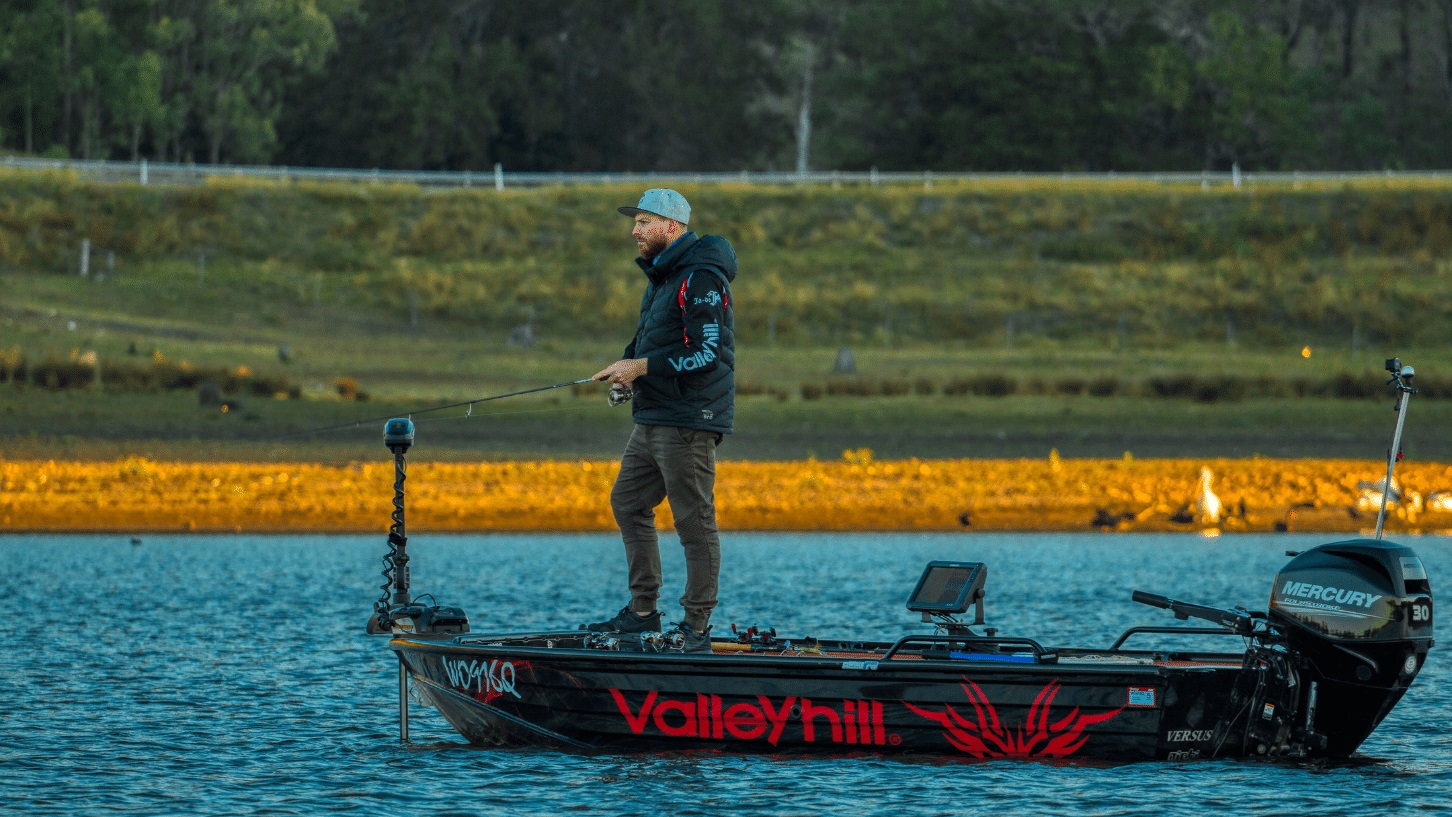
An alternative way to catch fish on these tough days is to use lures with a large profile or lures such as skirted jigs that imitate the lake's crustaceans. Fast retrieves with heavy spoons can also entice fish to bite, particularly later in the day when the water has heated up.
During the cooler months, particularly from May to July, the fish tend to scatter early in the mornings, often making schools quite difficult to find. Targeting scattered fish found in areas like Queen Street, Kirkleigh, Bay 13, Beams Creek and One Tree Point will see best results, as these fish will most likely be actively feeding. Try using lures such as spoons or soft vibes. Later in the day once the sun is higher in the sky, the fish will usually bunch up and better congregations of fish can be found. These fish tend to react well to quickly retrieved spoons or ice jigs.
The months of August to late September are undoubtedly the best time to target Aussie bass at Somerset Dam. I'd have to say the majority of big bass I've caught in excess of 50cm and 3kg have been caught during this period, as the fish carry roe over these months. You'll certainly struggle to find bass anywhere else that look so disproportionately fat! Early in the day I like to cast spoons replicating bony bream, which are the bass' main food source.
Later in the day I usually move around on schools, casting the spoon, trying to find individual feeding fish. Alternatively, I'll sit on a school and cast 1/2 or 5/8 oz jig head-rigged soft plastics.
During the late afternoon the schooling fish tend to again actively feed, with spoons or soft plastics the best lures to cast. Schools will be found through nearly the entire lake at spots such as Kirkleigh, the eastern end of Queen Street, Bay 13, Red Rock, Happy Clappers, Beams Creek and the Spit.
From late September to late October the fishing at Somerset can become very tough. There are two main approaches I use during this period as the fish transition from a spring to summer bite. I like to either cast soft plastics or chatterbaits. With both lures, try targeting schools of fish located in the same areas as that over the August/September period.
Summing up
The task of selecting my top three bass impoundments in Queensland was most difficult. While many other lakes could quite easily have made this list, I hope this article inspires you to visit Lake Somerset, Lake Maroon or Lake Borumba and gauge them for yourself. Using the tips and information I've shared, good luck in catching bass at these bucket list angling destinations.
Find your local Anaconda store and check out our extensive range of fishing gear for your next bass session.